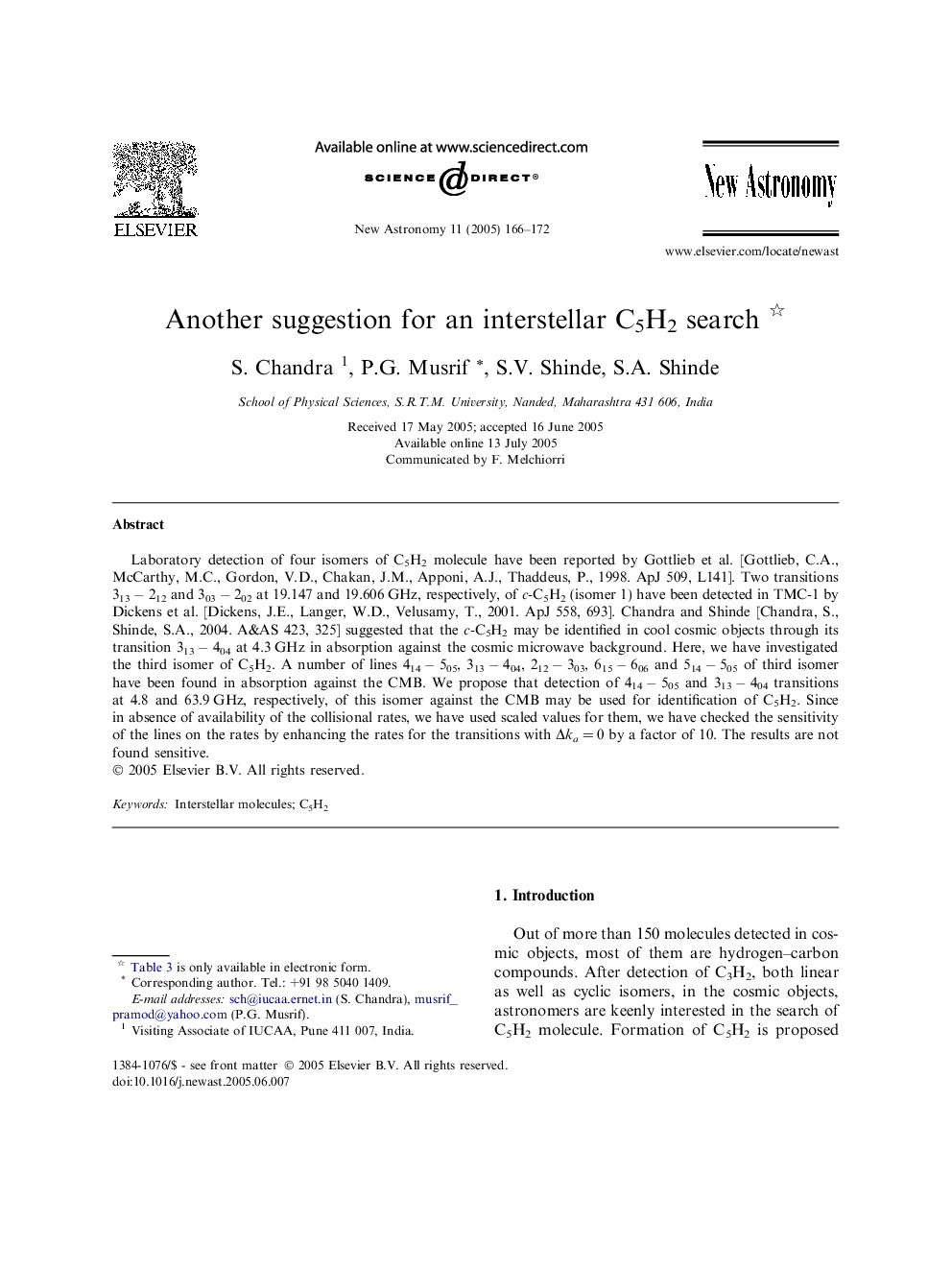| Article ID | Journal | Published Year | Pages | File Type |
|---|---|---|---|---|
| 10704695 | New Astronomy | 2005 | 7 Pages |
Abstract
Laboratory detection of four isomers of C5H2 molecule have been reported by Gottlieb et al. [Gottlieb, C.A., McCarthy, M.C., Gordon, V.D., Chakan, J.M., Apponi, A.J., Thaddeus, P., 1998. ApJ 509, L141]. Two transitions 313 â 212 and 303 â 202 at 19.147 and 19.606 GHz, respectively, of c-C5H2 (isomer 1) have been detected in TMC-1 by Dickens et al. [Dickens, J.E., Langer, W.D., Velusamy, T., 2001. ApJ 558, 693]. Chandra and Shinde [Chandra, S., Shinde, S.A., 2004. A&AS 423, 325] suggested that the c-C5H2 may be identified in cool cosmic objects through its transition 313 â 404 at 4.3 GHz in absorption against the cosmic microwave background. Here, we have investigated the third isomer of C5H2. A number of lines 414 â 505, 313 â 404, 212 â 303, 615 â 606 and 514 â 505 of third isomer have been found in absorption against the CMB. We propose that detection of 414 â 505 and 313 â 404 transitions at 4.8 and 63.9 GHz, respectively, of this isomer against the CMB may be used for identification of C5H2. Since in absence of availability of the collisional rates, we have used scaled values for them, we have checked the sensitivity of the lines on the rates by enhancing the rates for the transitions with Îka = 0 by a factor of 10. The results are not found sensitive.
Keywords
Related Topics
Physical Sciences and Engineering
Physics and Astronomy
Astronomy and Astrophysics
Authors
S. Chandra, P.G. Musrif, S.V. Shinde, S.A. Shinde,
